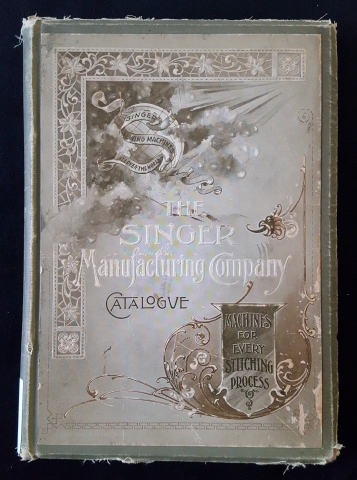Catalogue of Singer Sewing-Machines
Category: Preserve for the Future
Location: National Museum of American History Library
Catalogue of Singer sewing-machines illustrating their construction, their variety, and their special uses by manufacturers
The Singer name is synonymous with sewing machines. In addition to making the first practical use sewing machine for the home in 1851, Isaac Merritt Singer made important design improvements to sewing machines used for clothing, leather, and other industries.
This 1896 catalogue is a valuable source of information on the Singer Manufacturing Company and its industrial sewing machines. The first section describes and provides photographs of the company’s plant in Elizabethport, NJ, located on a 50-acre complex – one of the largest industrial establishments in the world at the time. The Singer factory itself was five stories high, contained 18 acres of floor space, and employed thousands of workers. The department that made machine screws alone employed about 300 men! Women primarily worked in needle manufacture, ornamenting (where the company name and other decorations were applied to the sewing machines), and testing departments. The second section of the catalogue lists the models made at the factory for a wide variety of industries, including glove making, book binding, and carpet sewing. The National Museum of American History Library frequently receives public inquiries about both home use and industrial sewing machines, so books like this are useful in providing answers.
This volume has a late 19th century cloth binding inset with printed front and back paper covers. The bookcloth is degrading on the edges and spine. There is significant wear to the printed paper covers inset in the bookcloth. The endsheets are brittle and one has a large area of loss. The text is separating from the cover. Conservator will remove the cover and repair the areas of loss. The spine of the textblock will be cleaned and relined with a new hinge material. The degraded and acidic endsheet will be replaced with a sheet retained for historic research. A custom enclosure will be created for this fragile item.
Discover more about this book in our Catalog.

